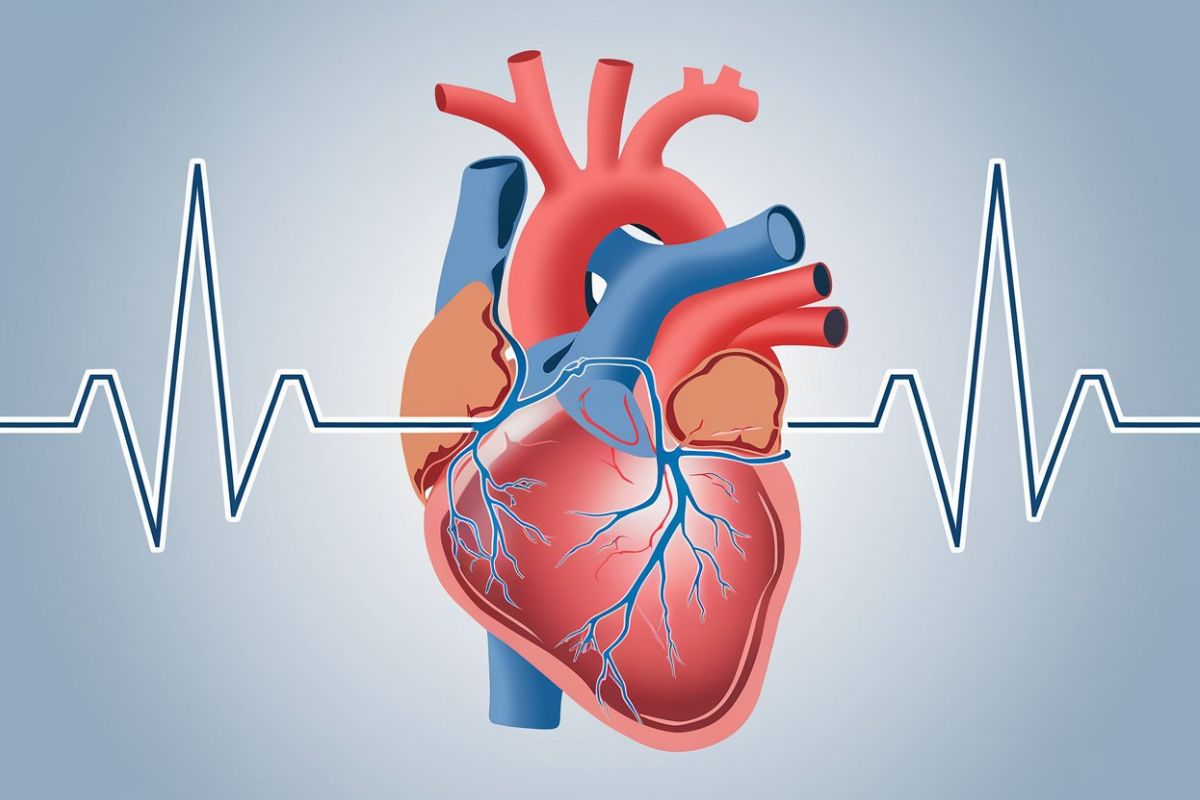
What is Lown-Ganong-Levine Syndrome? Imagine your heart suddenly racing, leaving you breathless and dizzy. This could be due to Lown-Ganong-Levine (LGL) Syndrome, a rare heart condition. LGL Syndrome speeds up the electrical signals in your heart, causing episodes of rapid heartbeat or tachycardia. Unlike other heart issues, LGL shows a short PR interval and a normal QRS complex on an ECG. This means the heart's electrical signals bypass the usual route, leading to faster-than-normal heartbeats. While it sounds scary, understanding LGL can help manage symptoms and improve quality of life. Let's dive into 35 key facts about this intriguing condition.
Key Takeaways:
- Lown-Ganong-Levine Syndrome is a heart condition causing rapid heartbeats. It's diagnosed through ECG and electrophysiological studies, and treatment options include medications and catheter ablation.
- Patients with Lown-Ganong-Levine Syndrome may experience secondary arrhythmias, but with proper management, they can lead normal lives. Research is ongoing to better understand the condition and improve treatments.
What is Lown-Ganong-Levine Syndrome?
Lown-Ganong-Levine (LGL) syndrome is a heart condition that causes episodes of rapid heartbeats. It involves the heart's electrical system, which controls the heartbeat. Let's dive into some key facts about this intriguing syndrome.
-
Definition: LGL syndrome is a pre-excitation syndrome where the heart's electrical signal travels from the atria to the ventricles faster than usual, causing tachycardia.
-
Symptoms: People with LGL syndrome often feel palpitations, shortness of breath, dizziness, or even fainting during rapid heartbeats.
-
Electrocardiogram (ECG) Findings: An ECG of someone with LGL syndrome shows a short PR interval (≤0.12 seconds) and a normal QRS complex. Unlike Wolff-Parkinson-White (WPW) syndrome, there is no delta wave.
-
Pathophysiology: Initially, LGL was thought to involve a special pathway called the bundle of James. Now, it's believed that most cases are due to fast conduction through the AV node.
-
Accessory Pathways: Some cases might involve fibers bypassing part of the AV node, but most don't show any extra pathways or structural issues.
How is Lown-Ganong-Levine Syndrome Diagnosed?
Diagnosing LGL syndrome involves specific tests and criteria. Here's what doctors look for:
-
Clinical Diagnosis: LGL is diagnosed based on ECG findings and electrophysiological studies, identifying a short PR interval and normal QRS complex during tachycardia episodes.
-
Differential Diagnosis: LGL is distinguished from WPW syndrome by the absence of delta waves. Other conditions like different pre-excitation syndromes and arrhythmias are also considered.
-
Incidence: About 2-4% of adults have a PR interval ≤0.12 seconds, but only around 0.5% have LGL syndrome.
-
Sex and Age Demographics: Historically more common in women, recent data show no sex or ethnicity predominance. The average onset age is 33.5 years.
-
Etiology: The exact cause remains uncertain. Theories include intranodal or paranodal fibers bypassing part of the AV node, but no single pathway is common to all cases.
What Tests are Used for Lown-Ganong-Levine Syndrome?
Electrophysiological studies are crucial for understanding LGL syndrome. These tests measure how electrical signals travel through the heart.
-
Electrophysiological Studies: These studies measure the conduction time from the atria to the His bundle (A-H interval) and assess the refractory period.
-
Diagnostic Criteria: Criteria include a short PR interval (≤120 ms), normal QRS complex, no delta waves, A-H interval ≤60 ms in sinus rhythm, 1:1 A-V conduction during atrial pacing at cycle lengths <300 ms, and maximum A-H interval prolongation during atrial pacing ≤100 ms.
-
Paroxysmal Supraventricular Tachycardia (PSVT): LGL patients are at higher risk for PSVT, which can appear as sinus tachycardia, AV nodal re-entrant tachycardia, atrial fibrillation, or atrial flutter.
How is Lown-Ganong-Levine Syndrome Treated?
Managing LGL syndrome involves medications and sometimes procedures to control symptoms and prevent episodes.
-
Treatment Options: Beta-blockers and antiarrhythmic drugs are commonly used. In some cases, catheter ablation can eliminate the abnormal pathway.
-
Catheter Ablation: This procedure uses a catheter to destroy the abnormal pathway, effectively reducing or eliminating tachycardia episodes.
-
Prognosis: LGL does not increase the risk of sudden death. The main issue is managing episodes of tachycardia, which can be controlled with treatment.
Historical Background and Anatomical Variants
Understanding the history and possible anatomical differences helps in grasping the full picture of LGL syndrome.
-
Historical Background: First described by Clerc, Levy, and Critesco in 1938 as a WPW variant, Lown, Ganong, and Levine identified it as a distinct entity in 1952.
-
Anatomical Variants: Theoretical variants include the James fiber (connecting the sinoatrial node to the AV node) and the Brechenmacher fiber (connecting the sinoatrial node to the His bundle), but these aren't found in all cases.
-
Electrocardiogram Aspect: In sinus rhythm, LGL shows supraventricular tachycardias with a short PR interval and normal QRS complex without a delta wave.
Secondary Arrhythmias and Patient Management
Patients with LGL syndrome may experience other heart rhythm issues, and managing the condition involves a comprehensive approach.
-
Secondary Arrhythmias: Patients might have secondary arrhythmias like atrial fibrillation or atrial flutter, complicating the clinical picture.
-
Patient Education: Patients should understand their condition and triggers. Lifestyle changes and regular cardiologist visits help manage the syndrome effectively.
-
Medications: Beta-blockers and antiarrhythmic drugs are used based on the specific arrhythmia and patient's health.
-
Catheter Ablation Success Rate: Success varies depending on the cause. When an accessory pathway is identified, ablation can be very effective.
-
Complications: LGL doesn't increase sudden death risk, but patients are more likely to develop tachyarrhythmias. Certain medications should be used cautiously.
Clinical Variability and Prognosis
LGL syndrome can present differently in each patient, and understanding this variability is key to effective management.
-
Clinical Variability: Symptoms can range from mild to severe, with some patients experiencing frequent episodes and others only occasional ones.
-
Age of Onset: Tachycardia usually starts around 33.5 years old but can occur at any age.
-
Sex Distribution: While historically more common in women, recent data show no sex-related predominance.
-
Ethnicity Distribution: No known ethnicity-related predominance exists for LGL syndrome.
Advances in Diagnosis and Treatment
Over time, the methods for diagnosing and treating LGL syndrome have evolved, improving patient outcomes.
-
Electrophysiological Studies: Essential for diagnosing LGL, these studies measure conduction times and refractory periods.
-
Diagnostic Criteria Evolution: Initially based on ECG findings, now electrophysiological studies provide more accurate diagnoses.
-
Treatment Evolution: Initially limited to medications, now catheter ablation is a viable option for selected cases.
-
Prognostic Factors: Generally good prognosis with no increased sudden death risk. The main concern is managing tachycardia episodes.
-
Patient Management: Combining lifestyle changes, medication, and sometimes catheter ablation, regular cardiologist follow-ups are crucial.
-
Research Directions: More research is needed to fully understand LGL's pathophysiology and find better treatments, including studying anatomical variants.
-
Prognosis: With proper management, individuals with LGL can lead normal lives, although they need to be aware of their condition and follow medical advice.
Key Points on Lown-Ganong-Levine Syndrome
Lown-Ganong-Levine (LGL) syndrome is a heart condition marked by a short PR interval and normal QRS complex on an ECG. Symptoms include palpitations, shortness of breath, and occasional fainting spells. Diagnosing LGL involves ECG findings and electrophysiological studies. Unlike Wolff-Parkinson-White syndrome, LGL lacks delta waves. Treatment options range from beta-blockers and antiarrhythmic drugs to catheter ablation for severe cases. Though the exact cause remains unclear, accelerated AV node conduction is often involved. The prognosis is generally good, with no increased risk of sudden death. Regular follow-ups and lifestyle changes can help manage symptoms. Understanding LGL's unique features and treatment options is crucial for effective care. Further research will hopefully uncover more about this intriguing condition.
Frequently Asked Questions
Was this page helpful?
Our commitment to delivering trustworthy and engaging content is at the heart of what we do. Each fact on our site is contributed by real users like you, bringing a wealth of diverse insights and information. To ensure the highest standards of accuracy and reliability, our dedicated editors meticulously review each submission. This process guarantees that the facts we share are not only fascinating but also credible. Trust in our commitment to quality and authenticity as you explore and learn with us.


